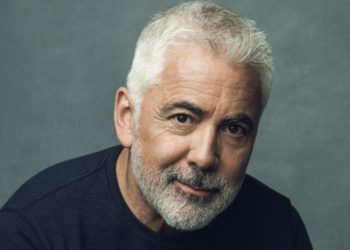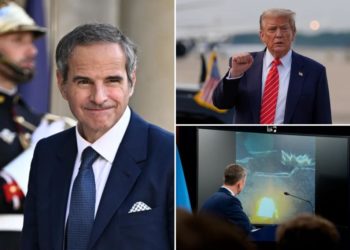Harvey Milk, the first openly gay elected official for a major American city, helped pass an ordinance that banned gay discrimination in public housing and employment in San Francisco.
Another activist, Billy Bean, was a professional baseball player who kept his sexuality a secret during his career, only to later come out and serve as the sport’s first ambassador for inclusion.
And there was Edith Windsor, a widow whose case led the U.S. Supreme Court to grant federal recognition to same-sex married couples for the first time.
Over the decades, these and other notable figures fought to expand the rights of the L.G.B.T.Q. community and advance change around the United States. Here are the Times obituaries for seven such figures.
Harvey Milk (1930-1978)
When Harvey Milk moved to San Francisco, he opened a camera shop that became his base as a neighborhood activist in the 1970s.
Using a bullhorn to rally crowds, both straight and gay, he opened his speeches with “My name is Harvey Milk, and I want to recruit you.”
After he was elected to the San Francisco Board of Supervisors in 1977, he helped pass a human rights ordinance that prohibited anti-gay discrimination in housing and employment.
But less than a year after his election, at age 48, he was fatally shot on Nov. 27, 1978, by a former city supervisor who opposed the anti-discrimination ordinance, Dan White.
Mr. Milk’s legacy has been honored over the years. Sean Penn portrayed him in the 2008 movie “Milk.” The next year, President Barack Obama posthumously honored him with the Presidential Medal of Freedom.
In 2019, the U.S. Navy announced it was naming a fleet oiler for Mr. Milk, who had served for four years but was discharged in 1955 after his superiors found him in a park frequented by gay men.
In March 2024, the 746-foot ship arrived in San Francisco, where it celebrated Mr. Milk’s legacy with local leaders, his friends and family.
This month, in a move that was intended as a rebuke of Pride Month, Defense Secretary Pete Hegseth ordered the secretary of the Navy to change the names of vessels honoring prominent civil rights leaders, including the U.S.N.S. Harvey Milk.
Larry Kramer (1935-2020)
Larry Kramer, an author, essayist and playwright, was also known for his pioneering and often provocative advocacy in the early days of the AIDS pandemic.
After he read about a disease that was referred to as the gay man’s cancer in the early 1980s, he created the Gay Men’s Health Crisis (now called GMHC). It was among the first organizations mobilizing for the rights of people who tested positive for the human immunodeficiency virus, or H.I.V., which causes AIDS.
Five years later, he was a founder of the AIDS Coalition to Unleash Power, or ACT UP, which raised awareness about the AIDS crisis through confrontational street actions and demanded an increase in drugs research.
In his activism, he wore a sweatshirt with a triangle logo that read “Silence = Death,” which became Mr. Kramer’s creed.
His work as a playwright included the 1985 autobiographical play “The Normal Heart,” which was lauded in the theater world. In 2014, the play was adapted into an HBO movie starring Mark Ruffalo.
Edith Windsor (1929-2017)
Edith Windsor was instrumental in helping the gay community achieve a significant victory in a 2013 Supreme Court decision that bore her name and granted federal recognition of same-sex marriage for the first time in U.S. history.
After she left her position as a senior systems programmer at I.B.M., where she had kept her sexuality a secret in the mid-1970s, she became a full-time activist and a popular fixture at L.G.B.T.Q. parades.
In 2007, after a 40-year engagement, Ms. Windsor legally married her partner, Thea Spyer, in Toronto.
After Ms. Spyer died in 2009, Ms. Windsor inherited her estate. But she had to pay more than $600,000 in state and federal estate taxes that she would not have owed if her marriage had been legally recognized in the United States.
Ms. Windsor challenged the Defense of Marriage Act of 1996, which prohibited the Internal Revenue Service from treating her as a surviving spouse. That case ultimately landed in the Supreme Court.
“To get married is a very big deal,” she told The New York Times in 2012. “And it’s an even bigger deal if you’ve been denied it.”
Pedro Zamora (1972-1994)
Pedro Zamora came to the United States from Cuba at age 8 as part of the Mariel boat lift in 1980. When he was in high school, he tested positive for H.I.V., and then dedicated his life to raising awareness about AIDS and safe sex.
In 1994, he joined the cast of MTV’s “The Real World: San Francisco,” where he shared his story of how he got infected through unprotected sex and his daily struggles as a young gay man with the disease.
Mr. Zamora educated viewers on not only how to avoid catching the virus but also how to interact with people who had it. Viewers saw him exchange vows during a commitment ceremony with a fellow AIDS activist, Sean Sasser, and together they were among the first real-life gay relationships on television.
A day after the show’s final episode aired, Mr. Zamora died from complications of AIDS. He was 22.
“Through his work with MTV,” President Bill Clinton said in a statement about Mr. Zamora after he died, “he taught young people that ‘the real world’ includes AIDS and that each of us has the responsibility to protect ourselves and our loved ones.”
Barbara Love (1937-2022)
Barbara Love, an author and activist, entered adulthood in the late 1950s and early ’60s as a closeted lesbian in Greenwich Village, the New York City neighborhood where police frequently raided lesbian bars.
“We’re like cockroaches,” she once said of her fellow lesbians of the era. “We only come out at night.”
As the gay rights movement and the women’s movement began taking root in New York City, Ms. Love fought for gay rights and for lesbians to have a voice in the women’s movement, and she and her friend Kate Millett, an academic and activist, published the feminist book “Sexual Politics” in 1970.
They also participated in street theater, including a demonstration in front of The New York Times’s classified advertising office to protest gender segregation in the paper’s “help wanted” ads. The paper soon changed how it handled the ads.
On Christmas Eve in 1970, Ms. Love organized a candlelit march in Greenwich Village to highlight the many gay people who would not be welcomed into their family’s homes over the holidays.
Joe Tom Easley (1940-2022)
Joe Tom Easley, who served in the Navy during the Vietnam War, became an activist and a lawyer, and spent years fighting against President Bill Clinton’s “don’t ask, don’t tell” policy.
Enacted in 1993, the policy allowed gays to serve in the military as long as they kept their sexuality a secret. As the chairman of the Servicemembers Legal Defense Network, Mr. Easley sought to end discrimination against gay military personnel and to repeal the policy.
In 2010, President Barack Obama signed legislation repealing the law.
In 2003, Mr. Easley’s wedding to Peter Freiberg was among the first same-sex unions announced in the wedding pages of The New York Times.
Billy Bean (1964-2024)
A handsome baseball player, Billy Bean kept his sexuality a secret as an outfielder for the Detroit Tigers, Los Angeles Dodgers and San Diego Padres, because he did not believe that the sport was prepared for an openly gay member.
As he rose through the minor leagues, he would present a photo of his girlfriend, with whom he shared an apartment during his first season with the Dodgers. He married and then eventually divorced her before beginning relationships with men.
He retired in 1995 and four years later disclosed his relationship with a male Miami restaurateur in an interview with The Miami Herald, coming out about his sexuality and emerging as a gay rights leader. He was only the second major league player to come out as gay. Glenn Burke, an outfielder for the Los Angeles Dodgers and Oakland Athletics, came out in 1982, after he retired.
In 2014, he returned to Major League Baseball as the organization’s first ambassador for inclusion, and in 2022, became the league’s senior vice president of diversity, equity and inclusion.
Johnny Diaz is a reporter for The Times covering breaking news from Miami.
The post These L.G.B.T.Q. Figures Forever Changed U.S. History appeared first on New York Times.




